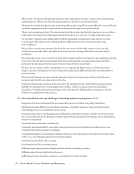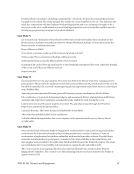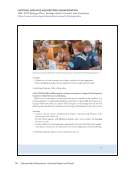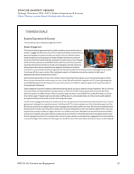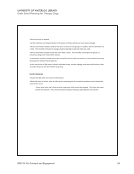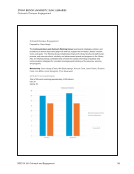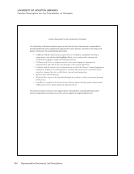14 Survey Results: Survey Questions and Responses campus. It also includes other librarians and professionals in the region, as well as alumni, donors, and members of the community. Our library does not have a coordinated outreach program, nor a formal shared definition for what constitutes outreach. Survey answers here address planned group activities, events, and exhibits that are not course-related, and that intentionally reach out to specific defined groups/communities. We have recently hired an outreach and engagement staff member. Our outreach is primarily (but not exclusively) designed for students and employees at the university. We host a great number of events every year. Outreach includes promoting services to the university, as well as community-based programs, especially outreach and engagement partnerships. Outreach includes promotional and student engagement campaigns/materials aimed primarily at undergraduate and graduate students to ensure strong engagement between students and the library. Outreach involves developing, coordinating, and delivering student-related events and initiatives and promoting the library’s services and resources to new and current users. There is close collaboration with student-related organizations and campus partners, as well as with internal library units and committees. Outreach includes specific programs and events that are designed to increase our users’ engagement with the library and its collections, particularly our special collections. Outreach includes the efforts that the library undertakes to raise awareness, promote, and enable use of our programs, services, collections, and products by anyone who might benefit from them. The targets of outreach activities include scientists, health professionals, patients, students, the general public, policy makers, the media, historians, librarians, other information specialists, and system and product developers. Outreach activities encompass: public communications in all media training focused on enabling and enhancing access and use of services (but not formal fellowships and training programs in informatics and librarianship) exhibits, public lectures, and related events partnerships to promote and enhance awareness and access funding specific projects designed to increase access and use (e.g., by underserved populations) collection and analysis of user feedback studies of use and impact and the use of all of these mechanisms to promote interest in careers in biomedicine, health, and information sciences. Depending on the specific population and circumstances, outreach activities may include provision of enabling technology (e.g., equipment, Internet access) and basic training (e.g., use of computing devices, Web development, health information literacy, information and data management). Outreach includes the promotion of our offerings and services to educational institutions, teachers, students, and underserved groups. It also includes community-based programming to reach constituencies external to our organization. NARA includes facilities including Presidential Libraries and National Archives field locations, all of which manage their own outreach activities. We interpret “library director” here to be each of these facilities’ directors. Outreach is a major component of the Libraries’ commitment to student and faculty engagement and success. Outreach is about meeting students where they are. This means we want to make them aware of what the library has to offer them and sometimes that means we leave the library to bring resources to the students (in the residence halls, in the student union building, etc.) Outreach is an umbrella word and underneath fits both internal outreach to campus services and external outreach to the broader community. Outreach is defined as activities directed to students, faculty, and staff at the university. We use the term community engagement when speaking about external outreach activities.













































































